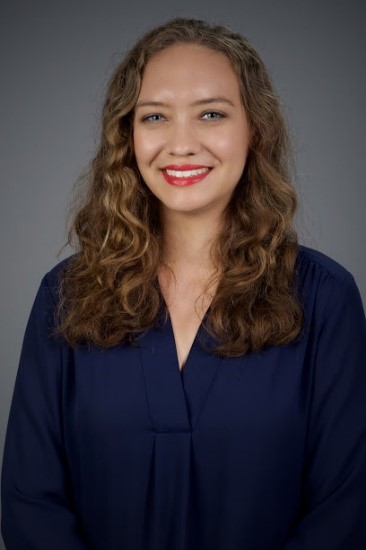Spring 2021 eNewsletter
Featured Research: Postdoctoral Research Fellow Update
Uncovering Lake Erie’s Harmful Algal Bloom Partners and Interactions
Dr. Sara R. Rivera, University of Michigan

Figure 1: This Microcystis culture was isolated from Lake Erie water in 2019. The cartoon close-up illustrates the co-living of Microcystis (green circles) and bacteria (grey ovals).
Cyanobacterial harmful algal blooms (HABs) are increasing in magnitude and frequency worldwide and pose major economic, human health, and ecological threats in the Great Lakes. The main culprit in Lake Erie HABs is Microcystis, a cyanobacterium that produces multiple toxins, known as microcystins, that cause liver damage in humans. Previous studies have shown that Microcystis does not live alone, but has potentially many bacterial partners (Figure 1). The objective of Dr. Rivera’s work is to identify the microbial partners of both toxin producing Microcystis and non-toxin producing Microcystis to isolate and understand these partnerships. Ultimately, this research may help us to better understand why some blooms are bigger or more toxic than others.

Postdoctoral Research Fellow (UM), Dr. Sara R. Rivera. Photo credit: Alvin Angeles.
Dr. Sara R. Rivera is a CIGLR Postdoctoral Research Fellow working with Dr. Gregory Dick (University of Michigan) and Dr. Reagan Errera (NOAA GLERL). Her research began and continues under COVID-19 restrictions. Nevertheless, environmental sampling was completed in summer 2020 and now she is focusing on culture-based laboratory work with the help of two University of Michigan undergraduate students, Helena Nitschky and Claire Zwiers. Lab-based culture research allows Dr. Rivera, with assistance from Dr. Jenan Kharbush (University of Michigan), to isolate interactions between specific partners and determine what molecules are being passed to create a “conversation” between the Microcystis and bacteria (Figure 2). The environmental samples, however, are essential to bridge the gap between laboratory-controlled experiments and the real world lake.
Much of the previous research regarding HABs in Lake Erie focused on nutrient concentrations and the impacts of various policy changes dictating water quality. Bacteria recycle those nutrients within the water, however, possibly contributing to the observed changes in bloom dynamics from year to year. Dr. Rivera firmly believes that to better understand bloom dynamics, we must understand the “conversations” taking place at the molecular level between the Microcystis and their bacterial partners. “Knowing who participates in and changes these conversations could impact the way we think about and predict harmful algal blooms,” said Dr. Rivera. “Small changes can have large impacts when the message is passed along throughout the western Lake Erie basin.”

Figure 2: Microcystis (green circle) and bacteria (grey oval) use molecules to “talk” to each other. Dr. Rivera’s work aims to address the question marks in this illustration of what molecules are being used.
This summer, Dr. Rivera is hoping that the COVID-19 restrictions can safely be eased to allow her to go out on the lake with NOAA GLERL researchers to collect additional samples. Assuming that samples will be available, she plans to scale down her work further using microfluidic droplets in collaboration with Dr. Nina Lin (University of Michigan) and her graduate student, James Tan, that would build on previous work done by Dr. Derek Smith during his time as a graduate student with Dr. Gregory Dick. Microfluidic droplets create tiny cultures from environmental samples, reducing the laboratory bias introduced during larger culture work.
Dr. Sara R. Rivera was awarded a one-year postdoctoral fellowship by CIGLR, which was extended to two years thanks to additional funding from the Lawrence Livermore National Laboratory (LLNL). She is completing her research at the University of Michigan’s Department of Earth and Environmental Sciences working with Dr. Gregory Dick (University of Michigan) and Dr. Reagan Errera (NOAA GLERL). Dr. Rivera is investigating the relationships of bacteria to Microcystis to better understand harmful algal blooms in Lake Erie. She previously received her B.S. in Geological Sciences and Biochemistry at the University of Michigan before completing both her M.S. and Ph.D. degrees in Oceanography at the Scripps Institution of Oceanography at the University of California San Diego.
